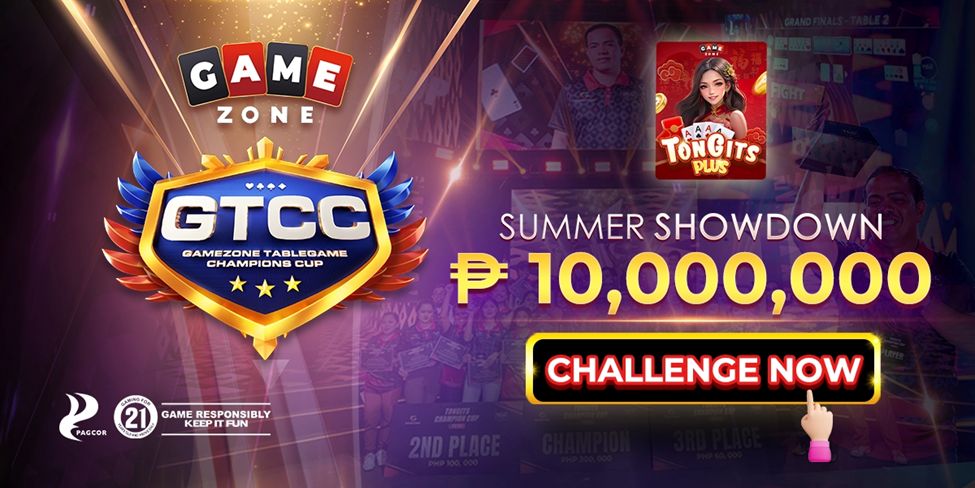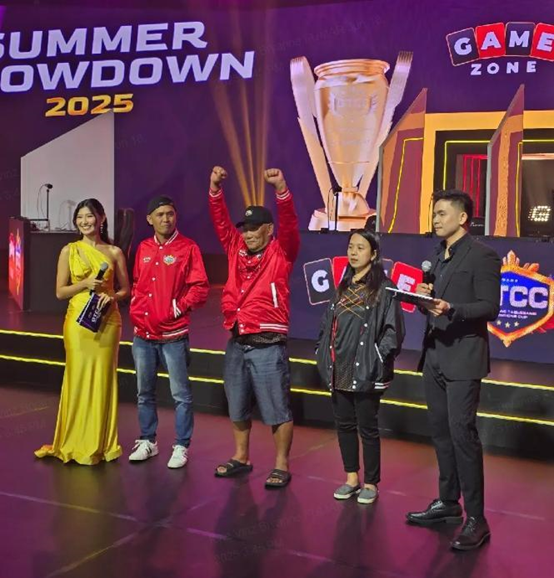In the fast-paced realm of online gaming, few events have managed to capture the hearts and imaginations of players like the GameZone Tablegame Champions Cup (GTCC). Built around the cherished Filipino card game Tongits, the GTCC rose to become more than just a competition—it became a movement. Though the final cards were played months ago, the echoes of GTCC still linger, reminding us of the moments, stories, and spirit that made it one of the most iconic tournaments in the Philippines’ digital gaming history.
As the digital dust settles, we take a reflective journey through the unforgettable experiences and timeless legacy of the GTCC—and explore exactly what we miss most about this once-in-a-generation card battle.

The Electric Energy of the Summer Showdown
The GTCC: Summer Showdown, held from June 24 to 28, ignited the dry season with a wave of excitement that swept across the nation. 135 of the most skilled Tongits players from all over the country converged in one of the most hotly anticipated gaming events of the year.
The buzz was palpable. Group chats exploded, livestreams surged in viewership, and the online gaming community collectively held its breath in anticipation. The tournament wasn’t just about winning—it was about making history. With a ₱10,000,000 prize pool, the stakes were high, but the passion burned even higher. And that’s what we miss: the shared energy, the buildup, the thrill of national pride rallying behind a traditional card game elevated to unprecedented heights.
A Multi-Tiered Tournament Built for Greatness
GTCC’s structure was unlike any other, designed to bring out the sharpest minds and most adaptable players. The progressive format was not only challenging, it was strategic—ensuring that every round, every hand, every decision could change the game.
- 135 players began their journey, split into Groups A, B, and C.
- After the elimination rounds, 84 competitors remained.
- From there, 30 advanced to the upper bracket, while 54 battled in the lower bracket.
- Only the top 9 semifinalists emerged from an intense 60-round trial.
- The Final 3 competed in 100 rounds, pushing skill and stamina to the limit.
Each phase brought fresh tension and drama, filled with unpredictable upsets and inspiring comebacks. We miss the tournament’s ability to keep us at the edge of our seats, not just as spectators but as participants invested in each play, each shuffle, and each final call.
Human Stories That Moved the Nation
Beyond the cards and strategy, GTCC was about real people with real dreams and challenges. These weren’t just usernames and avatars—they were fathers, mothers, grandparents, breadwinners, and warriors in their own right.
Benigno “Tatay Benigno” Casayuran: A Champion Fueled by Love
From Candelaria, Quezon, 62-year-old Benigno Casayuran nearly didn’t attend the GTCC due to financial constraints and his wife’s ongoing battle with Stage 2 breast cancer. But the kindness and support of his community changed his fate—they pooled resources to send him to the tournament.
His victory wasn’t just about skill; it was about love, sacrifice, and resilience. Holding his trophy and ₱5,000,000 in winnings, his words left the entire nation in tears:
“Para sa pagpapa-chemotherapy ng misis ko.”
That moment remains etched in our collective memory. We don’t just miss the gameplay—we miss the human connection, the raw emotion, and the reminder that some battles are fought far beyond the table.
Ryan Dacalos and Cesha Tupas: Everyday Heroes
1st runner-up Ryan Dacalos, 38, from Lipa City, dreamed of building a home and funding his child’s college education with his ₱1,000,000 prize.
2nd runner-up Cesha Tupas, 37, from Rizal, aimed to pay off debts and renovate her house for her family’s comfort.
They were not celebrities. They were parents with hopes, citizens with aspirations—proof that GTCC didn’t just reward skill, it empowered lives. Their victories spoke to every Filipino family dreaming of stability and a better future.
A Festival of Community and Filipino Spirit
Few tournaments in gaming history have managed to generate the collective celebration that GTCC did. Tongits, being a game deeply woven into Filipino culture, became a unifying force—transcending social status, geography, and age.
The event fostered unity across provinces, from barangay watch parties to livestream viewing rooms. Fans cheered together, debated strategies, and rallied behind their local champions. We miss the spontaneous digital celebrations, the livestream shoutouts, and the cross-cultural camaraderie that turned a competitive event into a nationwide fiesta.
GameZone’s Unparalleled Execution
At the heart of GTCC’s success was the flawless execution by GameZone, whose platform at gzone.ph made it all possible. They combined cutting-edge technology with user-first design to deliver a tournament experience that was smooth, fair, and accessible.
Key highlights:
- Free tournament chips for a level playing field
- Transparent leaderboard systems with real-time updates
- Multi-stage brackets with clear advancement criteria
- Mobile-optimized gaming interface for maximum reach and convenience
GameZone didn’t just host a tournament—they built a digital home for Filipino players, both seasoned and new, and nurtured a new era of eSports for traditional games.

Conclusion: A Tournament That Will Never Be Forgotten
The GameZone Tablegame Champions Cup was not merely a milestone in Philippine online gaming—it was a celebration of identity, passion, and the human spirit. Through every shuffle, draw, and discard, players told stories of strength, of unity, and of the dreams they carried into the game.
What we truly miss about GTCC is everything it stood for:
- A showcase of skill through structured and fair competition
- A platform for hope, where real people changed their lives
- A nationwide celebration of a beloved Filipino tradition
- A legacy of storytelling, where each player’s journey became part of a larger narrative
GTCC was more than cards, more than clicks, more than cash prizes. It was a reminder that digital games can reflect our deepest values, and that even in the virtual world, real lives can be touched, lifted, and celebrated.
As we look to the horizon, hopeful for another chapter, one thing remains certain:
GTCC may have ended, but its spirit continues to deal inspiration—hand after hand, heart after heart.





